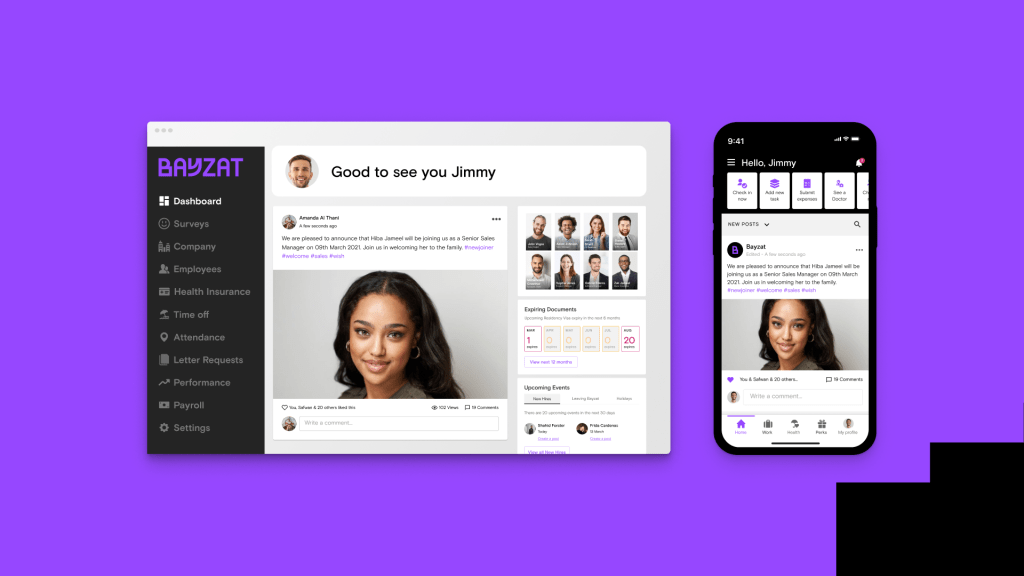What is the ROI of using HRMS Software?
Human Resource technology isn’t always at the top of a company’s spending priorities. Yet digital solutions such as Human Resource Management Software can have a huge impact on your business operations. Therefore, you should always calculate the ROI to fully understand the monetary benefits HRMS can deliver to your bottom line.
What is Human Resource Management Software?
Human Resource Management Software, or HRMS, is a digital solution for managing your organization’s HR goals. The software makes it possible for your HR team to allocate their time to essential tasks, providing them with opportunities to be more productive.
The technologies have been around since the 1970s, with the next decade making them more widely available. HRMS took off in the 1990s and early 2000s as web-based software started to pop up everywhere. These systems became more accessible and affordable.
HR management software has a multitude of functionalities. Some of the most vital tasks are:
- Storing and organizing employee data
- Self-service systems, such as time tracking
- Performance management
- Pre-boarding, onboarding and off boarding
- Employee benefits administration and management
Put simply, HRMS can be used to achieve many strategic and operational goals.
Read more about What is Human Resource Management System?
Why is HRMS software so important for businesses?

A big part of technology adoption has to deal with the benefits. You simply don’t want to spend a lot of money on technology that doesn’t provide you with any advantages.
The biggest benefit of HRMS is the ability to save time. The automation of repetitive and low-impact administrative tasks can give your HR staff a lot more time to focus on what matters. Your HR department can put its efforts into the strategic goals, becoming more productive at work.
The ability to save time shouldn’t be underestimated. But it’s also not the only benefit you can get with HR software. Other advantages include the following:
- Streamlining processes
- Creation of analytics
- Increasing feedback generation
- Reducing errors
- Ensuring compliance with local laws and regulations
Businesses can cut down costs and improve their productivity with the right HRMS system. What’s more, many of the functionalities can help build employee trust. This can be an essential part of boosting employee morale, improving their functionality and ensuring you cut down churn rates.
What is the cost of implementing HRMS software?
So there are clear benefits to an HR management system. But what is the cost of implementing one in your organization?
Capturing the Rate of Investment (ROI) of a new HR product is not straightforward. It’s important to tailor the calculations to your specific business needs and organizational objectives. You must focus on a few specific categories in order to do this:
- Time – how much time do employees spend on specific tasks that affect profitability? You want to specifically pay attention to the tasks that can be reduced with HRMS systems.
- Productivity – focus on productivity as well as understanding the time employees spend on these tasks before implementing the software. You want to consider how much productivity will change once things like self-service portals are introduced.
- Cost of software – you need to compare different HRMS options to get a better understanding of how much it all would cost.
- The annual cost of an employee – how much do you spend in terms of HR for each employee? You want to know what managing payroll, attendance, insurance, well-being and recruitment costs for your business.
- Turnover cost – you also need to track employee turnover. Calculate how much each employee is making when costs are considered.
You can get a better idea of what the savings are by focusing on the above measures. It is important to measure each section before implementing the HR software and after. Naturally, you might not know the full savings before implementing, but you can make educated guesses. Furthermore, plenty of HRMS systems allow businesses to trial the service before purchase. This is a great opportunity to test the ROI and see what happens to things like productivity.
It’s crucial to keep a few things in mind when calculating your ROI. You need to remember to:
- Work with quality data
- Update data as necessary
- Be realistic with scenarios
- Build in variables to your calculations
- Avoid being overly simplistic
- Include risk scenarios
If you remember these things, you can start calculating ROI and unleash the transformative power of HRMS.
The importance of measuring HR management system ROI
It’s vital to take the time to measure the ROI of your HRMS. Not only will it help you understand the benefits of using the system, but you’ll also find ways to improve your business practices.
If you’re spending a lot more money than you are saving, then you can see that there is a problem in the system. This may be because you didn’t pay enough attention to the implementation process. The reality is that your HR team needs the right tools to implement new technology. You need to ensure there is enough training to achieve the desired results.
The other option is that you could have run into a software issue. You may have opted for the wrong technology, or your current processes are not working. But being aware of the ROI will help you identify the right systems and functionalities.
The indirect and direct benefits of HR technology investments
If you’re still not fully convinced of the benefits of HR technology, then consider these essential direct and indirect benefits:
- You eliminate processing times – The HR department can save time by eliminating the processing times of the most mundane tasks. Automated technology makes it fast to process information and manage things such as payroll information.
- Reducing manual errors – Another direct benefit is the reduction of errors. Inputting data manually is not just tedious but can also lead to errors. But even the smallest of mistakes when compiling payroll data can cost hundreds, for instance. The right technology can ensure this won’t happen.
- You minimize risks – You’ll also benefit from risk reduction. HR technology is compliant with the UAE labour laws, ensuring your company won’t risk legal battles.
- Boosting productivity – Indirectly, HR technology can have a big impact on your productivity. Modern technology can really improve employee engagement and motivation.

The bottom line
The benefits of Human Resource Management Software are extensive. Their impact on business operations can be immense, especially when it comes to small businesses. But many SMEs often worry about the cost of implementing technology. This would be a mistake.
The reality is that technology can save businesses money, boost productivity and improve employee-employer relations. If you want to understand these benefits to their fullest, you should always calculate the ROI of implementing new software.
Make sure you also pick your HRMS carefully. You want to find HRMS software for your small or medium businesses that work for your business and your professional goals. It’s a good idea to talk to service providers and see what they can offer to meet your needs.








Get Social